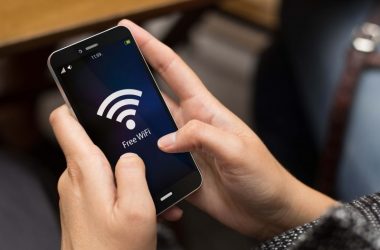An Apple tablet computer, expected to be introduced next week, will run on both AT&T and Verizon Wireless 3G networks, reports say, but two industry sources warned to not assume Verizon is on board.
It is possible both carriers had made deals to provide wireless service earlier in the week, however some last minute changes may be related to business decisions and have little to do with technology limitations.
The two analysts spoke separately with Computerworld on the condition of anonymity, which may indicate the carrier situation is probably volatile and could change before Apple's expected tablet announcement next Wednesday.
Additionally, the device is only expected to be announced that day, and any internal components could be altered prior to its initial shipment a few weeks later.
Spokesmen for both the carriers said they would not comment on the issue.
Analyst Jack Gold, of J. Gold Associates, said he thought it makes more sense for Apple to have as many carriers on board as possible to increase reach and sales, and AT&T and Verizon each have more than 80 million customers. “Apple would be nuts to not have as many carriers as possible,” Gold said.
Gold also said he presumed that Apple would want to make the tablet work on Verizon's network just to “get as far away” from AT&T, which has held the exclusive on the iPhone and has been drubbed by iPhone users unhappy with AT&T's network.
From a technology standpoint, it wouldn't be hard for the tablet to support both networks. Doing so would require the device to have radio chipsets for both a GSM network, which AT&T uses, and a CDMA network, which Verizon uses.
Of course, that doesn't mean two separate radios are needed inside each tablet, since Qualcomm Inc. makes the Mobi chipset, which combines both GSM and CDMA, Gold said.
Having two separate radios in one device could raise the cost by $30 to $50, something Apple would likely avoid even if the new tablet costs more than $500, he said.
Gold said it seemed unlikely that Apple would have two separate tablet models, one for CDMA and the other for GSM, but he noted that many phone manufacturers do so.
And if Apple is trying to avoid an exclusive deal with this expected launch, Gold said he also wondered why the tablet wouldn't work on more than two carriers in the U.S., since T-Mobile USA runs a separate 3G network based on GSM.
The proposition that more than one carrier could support the Apple tablet suggests there will some kind of competition for throughput, or speed, a user gets. Most measurements of speeds are based on averages over broad areas, and don't account for individual differences, including whether a nearby cell tower is congested with many users or near tall buildings and other obstructions, analysts noted.
AT&T Mobility CEO Ralph de la Vega said in December that the carrier was having problems in New York City and San Francisco, where networks performed “below standards.” In San Francisco's financial district, for example, antennas needed to be replaced, he noted.
On a broader basis, Verizon has also established a larger area of coverage for 3G wireless in the U.S than AT&T, an issue highlighted in a series of TV ads. AT&T has responded with its own ads, making note of greater variety of network capabilities for its users.
De la Vega has described a series of network buildouts that include moving to a faster variation of its 3G network, called HSPA 7.2, to be installed in 25 cities by mid-2010. Asked today about the status of six cities that were due to be activated with HSPA 7.2 by now, however, the AT&T spokesman would not comment.
Theoretically, HSPA 7.2 gives a maximum download speed of 7.2 Mbit/sec, with average speeds double of what AT&T can now offer with conventional 3G, de la Vega said. Presumably, an Apple tablet could take advantage of HSPA 7.2, but it is not completely clear that's the case.
However, theoretical speed is largely meaningless, especially to end users, Gold and other analysts noted.
Root Wireless found in a recent study that average 3G speeds for AT&T ranged from 246 Kbit/sec in New York to a high of 428 Kbit/sec in Dallas. Also in that study, Verizon offered average 3G speeds from 195 Kbit/sec in Seattle to 259 Kbit/sec in Chicago.
If users decide to connect to a cellular wireless connection, they will have the variations of distance, the number of other users and physical obstacles, just as they do today with cellular voice services.
If they work within a Wi-Fi network, as the Apple tablet is rumored to support, speeds of 10 Mbit/sec up to more than 100 Mbit/sec is possible, but only within that network.
A user bringing in a signal via cable modem or DSL to a business or home Wi-Fi zone might only get 1 Mbit/sec to 7 Mbit/sec, which puts a limit on the total network connection, even over the Wi-Fi portion, Gold said.
For most users of the expected Apple tablet, 3G speeds would be enough to support their needs “unless they are doing a lot of streaming video,” Gold said. At the average speeds Root Wireless found, streaming video could pose problems, he said.
Video streaming is more easily addressed with the prospect of much faster speeds of up to 6 Mbit/sec. with next-generation Long Term Evolution (LTE) networks, which both Verizon and AT&T are adopting. Verizon is aiming to launch LTE in up to 30 markets in 2010, and has already begun trials in Boston and Seattle, while AT&T will introduce services in 2011.
Apple would have to update its tablet for LTE connections. The company would also have to do an update if it wants to go to another fast wireless standard called WiMax, which is being rolled out now by Clearwire and Sprint Nextel. WiMax offers download speeds of between 3 and 6 Mbit/sec. Nobody is talking about Apple's tablet supporting WiMax, however.





